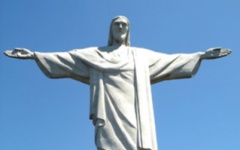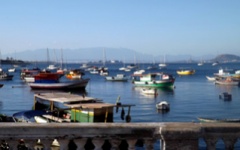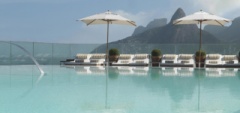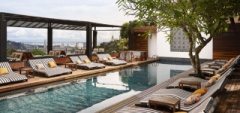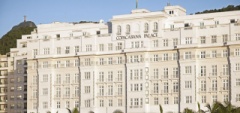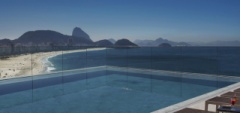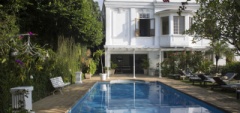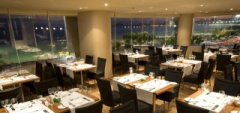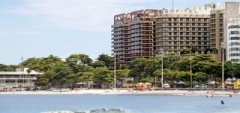Rio de Janeiro Activities
Possibly one of the most eye-catching and entertaining cities in the world, Rio has much to offer...
Few places in the world combine nature, adventure and culture quite as well as Rio de Janeiro. With its towering peaks, golden beaches and lush national parks, it is fairly easy to forget that you are in the centre of one of Brazil’s largest cities. From paddle boarding, to hiking, to markets, cooking classes, art tours and samba, there is a huge amount to see and do. Below we have outlined a few of our favourite Rio de Janeiro activities so please have a read through the links below:
Corcovado, Santa Teresa, Lapa & Sugar Loaf
Rio is known for being a vibrant city as well as for its friendly warm and welcoming residents. Its colourful fruit and vegetable markets display a lot of these qualities. They are all over Rio and are very easy to find being in different locations every day of the week. Paying the market a visit is a great way to be introduced to a huge variety of exotic tropical fruits, sounds, tastes and colours. The vendors are very hospitable and are always pleased to give out some samples of their products.
After your visit to the market you will head on to see one of the world’s most famous tour attractions in the world, the statue of Christ the Redeemer. With its open arms blessing the whole city of Rio de Janeiro, it is exquisitely positioned on top of the 710 meter-high Corcovado (hunchback) Hill. Made of concrete and soapstone, measuring 37 meters high and weighing 1,145 tons, the statue was inaugurated in 1931 and built with donations from the Catholic Church. A superb view of the whole city can be enjoyed from its open terraces, including the city centre and the beaches of the southern neighbourhoods such as Copacabana, Ipanema and the Lagoon. It is also possible to see Sugar Loaf at the entrance of Guanabara Bay, the whole city of Niterói, as well as a huge portion of the northern part of the city and its suburbs. From the top you can admire the fantastic blend of gorgeous beaches being washed by deep blue waters, high mountains that border the landscape, thick forests and urban areas all together and connected.
Once you're in Rio, it is easy to understand why Brazilians say that it took God seven days to create the whole world and five of them were spent just working on Rio!
Not far from the Corcovado train station there is a distinctive place that some call Rio’s Montmartre! You cannot miss a visit to Santa Teresa - a unique part of Rio up in the hills with old colonial houses and narrow streets. Here you can feel the atmosphere of art, music and history. Being the home of several painters and artists this little jewel is encircled by charming restaurants bistros and bars that add a touch of both sophisticated and simple gastronomy. In Santa Teresa you will feel like you’re in a little town with small grocery stores, markets and family businesses.
From Santa Teresa you will drive through Lapa where you will visit the world famous colourful Selaron stairs and will also have a quick drive around the downtown area where many historical and cultural sites are located.
Our day will finish visiting one of the most popular tourist attractions in Rio - Sugar Loaf. This name was given to the mountain due to its shape resembling the conic moulds that were used in the sixteenth century to produce sugar. Located at the entrance of Guanabara Bay this massive granite rock measuring 396 meters is one of the city’s most famous landmarks. You can reach its top by cable car, starting in the gorgeous neighbourhood of Urca. Built in 1912 by a Brazilian engineer and renovated in 1973, the current equipment has transparent walls and carries 75 people. It takes only 6 minutes to reach the top and once you are there the view is simply superb.
Corcovado, Tijuca Forest & Beaches
This morning you will be met to be taken you to one of the world's most famous tourist attractions, the statue of Christ the Redeemer. With its open arms blessing the whole city of Rio de Janeiro, it is exquisitely positioned on top of the 710m- high Corcovado (hunchback) Hill. Made of concrete and soapstone measuring 37 meters high and weighing 1.145 tons the statue was inaugurated in 1931 and was built with donations from the Catholic Church. A superb view of the whole city can be enjoyed from its open terraces including the city centre and the beaches of the southern neighbourhoods such as Copacabana, Ipanema and the Lagoon. It is also possible to see Sugar Loaf at the entrance of Guanabara Bay, the whole city of Niterói, as well as a huge portion of the northern part of the city and its suburbs. From the top you can admire the fantastic blend of gorgeous beaches being washed by deep blue waters, high mountains that border the landscape, thick forests and urban areas all together and connected. Once you are in Rio, it is easy to understand why Brazilians say that it took God seven days to create the whole world and five of them were spent just working on Rio!
The city does not only provide breathtaking views from above. Once you are back in the city streets you will be impressed by the huge portion of tropical rain forest inside its own urban area. The Tijuca Forest is just a few minutes away from densely populated areas and one of its hills holds the famous Corcovado Mountain. Once there you will find roads and tracks passing through a dense green mass of trees and tropical plants. At its centre, you can get close to an impressive waterfall, as well as walk alongside rivers and lakes. Butterflies, tropical birds and small animals can also be spotted as you move through the park.
The beaches in Rio are part of the most popular attractions that the city can offer. Although it is a little far from the centre, Barra da Tijuca is one of Rio's favorite beaches. This beach is known for its clean waters and beautiful young people who frequent it. It is also notorious for being a good choice for leisure and relaxation. One of the most attractive points in Barra beach is around a restaurant-kiosk called “Pepê”. Young folk, artists, famous sportsmen and curious people stay in the area close to the restaurant, where you can also taste fantastic snacks and sandwiches, all made with natural ingredients. You will stop at “Pepê” kiosk to try the famous Brazilian juice "açai", made from the berry with the same name, which is considered to be a powerful antioxidant.
Surrounded by expensive and classy apartments and a fancy golf course, lies São Conrado beach. The landscape is beautiful and the view of the surrounding hills, Gávea Rock, in particular, is just amazing. It is in São Conrado that you will find Rocinha, an impressive favela with more than 100.000 inhabitants. The suburb has also become very popular as it is the starting point (the Gávea Rock) and the landing area (the Praia do Pepino) for Rio's famous hang gliding flights.
The tour takes you from São Conrado beach to Leblon beach by the beautiful and scenic Niemeyer Avenue that runs between the Dois Irmãos Mountain and the sea. You will also stop by the Leblon belvedere for beautiful pictures of the Leblon and Ipanema Beaches.
Local Rio By Night
There is no other place in Rio that embodies the "alegria" or happiness of the Brazilian people more than the nightlife scene in the neighbourhood of Lapa. Once the sun goes down, this normally quiet neighbourhood turns into a bustling and vibrant area full of restaurants, nightclubs and bars. The streets fill with cariocas and tourists alike who flock to this Rio nightlife Mecca with one thing in mind…fun!! From traditional northeastern forró, to Rio’s own samba, to reggae from Bahia, visitors can enjoy the best that the Rio music scene has to offer.
You will visit one of the best clubs in Lapa, Rio Scenarium; an unusual bar, a mix between an antiques shop and an auction house, where the locals come to listen to traditional Brazilian jazz and samba.
Dona Marta Community Visit
This is a unique opportunity to explore some of the social aspects of Rio by visiting one of the poorer communities of the city known as a “favela” (or shanty town).
This walking tour will take you to the community where the first Pacification Police Unit of Rio de Janeiro was installed. The Santa Marta favela has welcomed many celebrity visitors including Michael Jackson, Beyoncé and Madonna. These celebrities have left their mark on the community and their stories have become part of the favela's history and the progress of its local residents.
The two-hour walking tour through the favela is conducted by a trained tour guide who lives in the community. The setting of many video clips and international movies, Santa Marta offers plenty of attractions. Visitors will ride the tram to the top of Santa Marta see the Michael Jackson statue, visit several social projects and get a feel for the daily routine of the community's six thousand residents.
Santa Marta's stunning location offers visitors a privileged view of the city. After your walk through the maze of narrow alleyways that cling to the steep hillside you are rewarded by sweeping views of Sugarloaf, Christ the Redeemer, Rodrigo de Freitas Lagoon and the surrounding neighbourhoods.
The tour gives visitors a different perspective of the city and offers a glimpse into the daily routine of the favela. The tour contributes to the community’s social development and fosters the exchange between different classes and cultures.
Bike Tour along Rio's Beaches
A pleasant tour along Rio´s most famous beaches: Leblon, Ipanema and Copacabana. You will have the chance to feel and observe how the cariocas enjoy their beaches; running, playing soccer and cycling along the seashore.
A ride around the lagoon will also be a highlight on this tour since the mountain range views from the lagoon are amazing and make the perfect setting to stop and have a Caipirinha!
Art Tour
Here is an opportunity to become more familiar with Brazilian Art. Your first visit will be to Rio's newest art museum the MAR. The architectural structure of the Museum building is a masterpiece in itself and the exhibitions bring together historical and contemporary artworks through both long- and short-term national and international exhibitions. With its own collection - now being formed through acquisitions and donations that match its schedule - MAR has also borrowed works from some of the finest public and private collections in Brazil in order to implement its program.
From the MAR Museum you will follow on to the Modern Art Museum (MAM) for a quick visit, before finishing at the contemporary art Gallery, Silva Cintra, which is considered to be one of the leading galleries in the country and certainly a reference in Rio de Janeiro, representing the work of various Brazilian artists such as Amilcar de Castro, Miguel Rio Branco, Nelson Leimer, Leda Catunda, Senise among others.
Hiking Sugar Loaf
This is an adventurous way to explore one of Rio's most well-known attractions - Sugar Loaf Mountain! After driving to Praia Vermelha beach you will begin the Claudio Coutinho trail; a well-known playground for sports such as biking and especially hiking. The trail begins with a steep incline alternating with flatter parts and some more challenging uphill stretches.
Getting to the top of Sugar Loaf by hiking/climbing can be done by anyone in good physical condition and does not requires any special equipment besides some good hiking boots or climbing shoes.
On the way back you will get the cable car to Morro da Urca from where you will do a short hike back to Praia Vermelha. Some of the best views from Rio are guaranteed on this amazing and challenging tour.
Hiking to Two Brothers Hill “Dois Irmãos” with a community visit to Vidigal
An amazing hike to the Dois Irmãos (Two Brother’s) hill is now possible due to the pacification of the Vidigal Favela located on the Atlantic Ocean side of the hill.
The Dois Irmãos hill is the twin peak rising 533m at the end of Leblon Beach. The hill and its 844m-high neighbour, Pedra da Gavea (Gavea Rock), are seen from most parts of the southern zone of Rio and from the hill you will get even more unique views of our spectacular city.
The climb will start from the popular Vidigal favela, which has the highest number of foreign inhabitants in Rio and will take you through a network of trails, footpaths and labyrinths into the Penhasco Dois Irmãos Natural Park.
The higher you go, the more impressive the sights become. You will get complete views of the Pedra da Gavea, the south zone neighbourhoods and beaches of Leblon, Ipanema and Copacabana, the Rodrigo de Freitas Lake, the Christ statue, Sugar Loaf and the immense Atlantic Ocean. It is the only true 360º spot on a mountain summit in Rio.
This is a unique opportunity to explore some of the social aspects of Rio by visiting one of the poorer communities of the city known as a “favela” (or shanty town). Today the local community develops several social programs like 'Centro de Montanha Vidigal'; the profits of which go to local residents and centers. You will start by walking through the maze of alleys to get a feel for how it is to live in the favela. Then you will continue to a trail that leads to a ledge with breathtaking views of Ipanema, Copacabana, the Lagoa and Guanabara Bay.
Vidigal's stunning location offers visitors a privileged view of the city. The walking tour is conducted by a trained tour guide who lives in the community. After your walk through the maze of narrow alleyways that cling to the steep hillside you are rewarded by sweeping views of Sugarloaf, Christ the Redeemer, Rodrigo de Freitas Lagoon and the surrounding neighbourhoods.
Favela Vidigal is quickly becoming a must-see tourist destination in Rio de Janeiro. The tour gives visitors a different perspective of the city and offers a glimpse into the daily routine of the favela. The tour contributes to the community’s social development and fosters the exchange between different classes and cultures.
Petrópolis
Approximately one hour drive from Rio, the city of Petrópolis, located up in the hills and surrounded by rainforest and superb landscapes, it is an attraction in itself. The city has a European feel; chosen by Brazilian emperors to host their summer palace, many wealthy families followed and decided to settle in this intimate city.
On the tour you will have the opportunity to visit the following historical sites :
- The Quitandinha hotel, which was formerly one of the fanciest Casinos in Brazil;
- The Imperial palace, which displays incredible XIX century architecture, original furniture, historical pieces such as the sceptre and crown of Emperor Dom Pedro II, historical documents, imperial jewellery and priceless pieces of art that once belonged to the imperial family.
- The Crystal Palace, which was built in France in a cast iron pre-moulded structure at the Conde D’Eu at Princess Isabel’s request, and is used today for concerts and theatrical presentations.
- The São Pedro de Alcântara Neo Gothic Cathedral, a French neo-gothic building dating back to 1884. Within the confines of the Imperial Chapel, visitors can view the resting place of the remains of Don Pedro II, Dona Teresa Cristina, Conde D’Eu, and Princess Isabel.
- The Santos Dumont's house that once belonged to this very talented Brazilian inventor. Inside the house you can see many of his interesting inventions, such as the first hot water shower in Petróplis.
- The Crystal Palace is another attraction that cannot be left out. It is a glass and iron pavilion once used as a dancehall at the beginning of this century. You will also visit the Neo-Gothic Saint Peter's Cathedral named after both the patron saint of the Empire and the Emperor Dom Pedro II.
Local Cooking Experience
A pleasant evening hosted in the private house of a local resident. Your host will be a Brazilian entrepreneur who also has a passion for cooking.
At his cosy penthouse in the Botanical Gardens Neighbourhood, you will be taught how to cook one of the most famous dishes in Brazilian Cuisine; shrimp and fish Moqueca.
During the demonstration, clients will be invited to participate in the process of preparing the dish. They will also learn how to prepare a perfect Caipirinha and a delicious Brazilian dessert!


